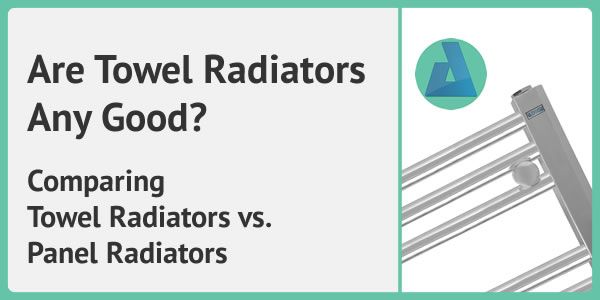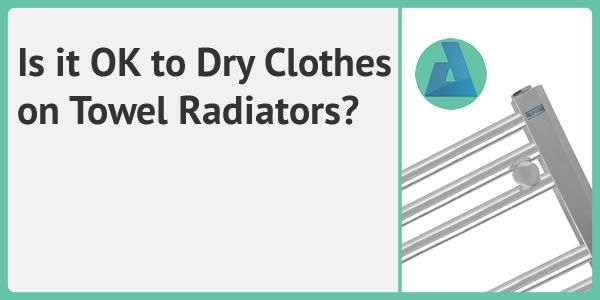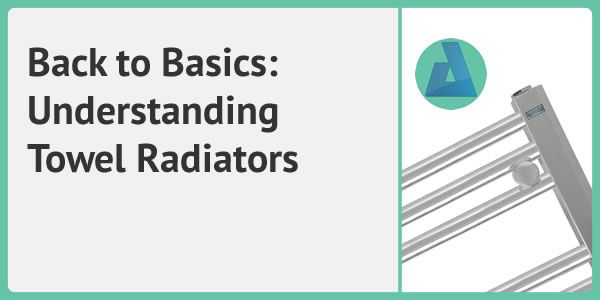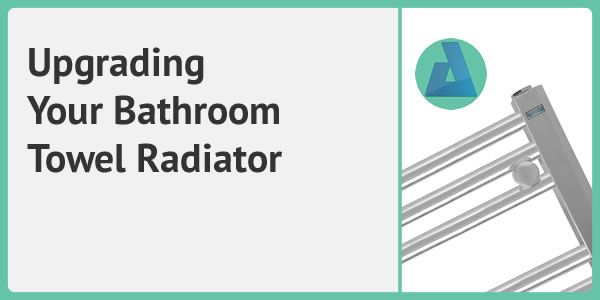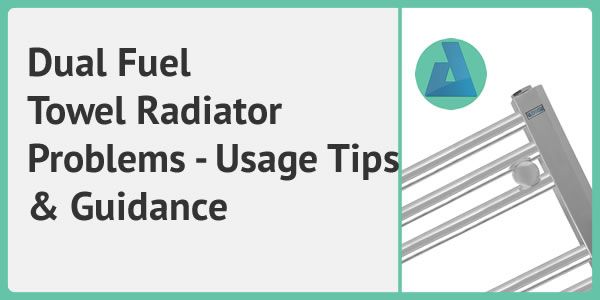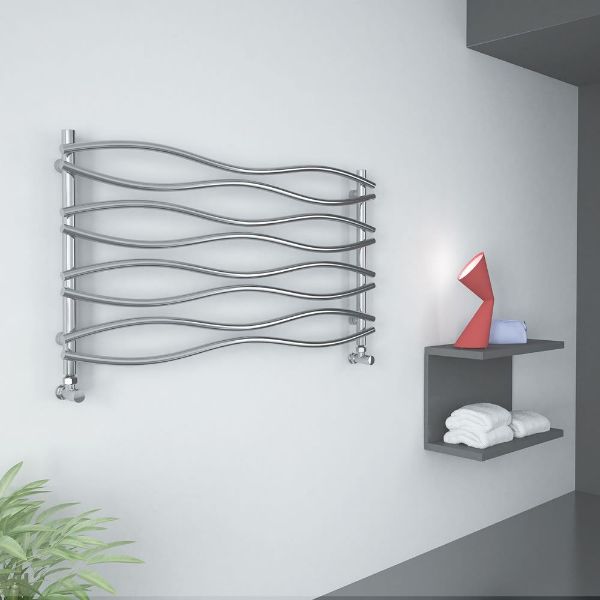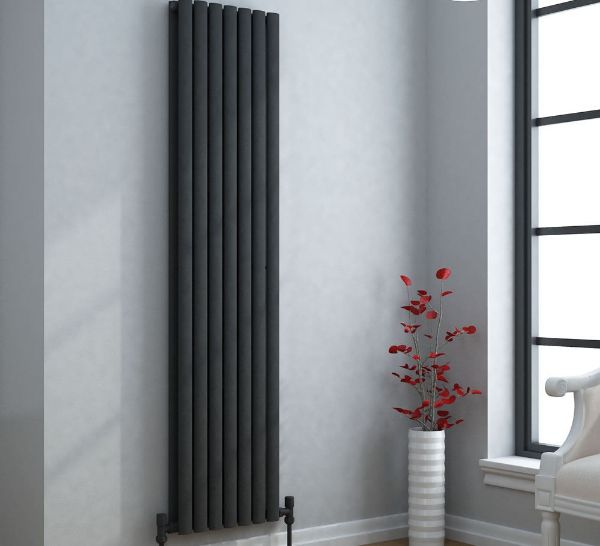All About Towel Radiators & Heated Towel Rails
To effectively utilize a dual fuel towel radiator, it is essential to first understand the functionality of this type of heating appliance. A dual fuel towel radiator is designed to operate using both the central heating system and electricity. This means that you have the flexibility to use it even when the central heating is turned off in the summer months, making it a versatile option for keeping your towels warm and dry throughout the year.
You can use/convert your central heating towel radiator to a dual fuel one by adding some parts and fittings such as dual fuel corner valves or a T piece, a T pipe (also known as dual fuel adaptor) together with an electric heating element. These additional parts will enable you to use your towel radiator as dual fuel meaning that it can be part of your central heating and can be used as electric only during summer months.
What Is the Correct Way of Using A Dual Fuel Towel Radiator?
Just like any other electrical equipment, installing and using your heating element requires your attention. The first and most important issue is to get it installed by a qualified “and” competent installer. No offense to anyone but not all qualified are competent and not all competent are qualified! So, a little homework to find the right person to do the job is very important to begin with. But once it is installed, how exactly do you mean to use it?
Most people are generally under the impression that they can simply switch from central heating use to electric use without any hassle. Some even believe that both heat sources can be used simultaneously. Unfortunately, this is not the case. The sole purpose of having a dual fuel towel radiator is to be able to have warm towels during summer months only, in which the central heating system is generally turned off. The correct way of using a dual fuel towel radiator would be to use the central heating option during the winter and use the electric option only during the summer.You should also follow the correct procedure when switching from one to the other.
How To Switch From Central Heating To Electric?
Come April or May, you may wish to turn off your central heating and switch your towel radiator from a plumbed radiator to an electric one. Doing so will still kill the chill in your bathroom and let you have warm towels after a bath or shower. By following the steps below, you can protect your central heating, towel radiator, and, most importantly, your electric heating element which is installed inside the towel radiator.
Switch From Central Heating to Electric Element:
- Before you switch from central heating to electric usage, you must isolate the radiator from the rest of your central heating system by turning both inlet (flow) and outlet (return) valves completely off.
- Secondly, you will either need to loosen the bleed valve or the return valve slightly. The trick here is to be very gentle and loosen either of those very slightly. Loosening one of these will reduce the risk of pressure building inside the towel radiator as the electric element heats the trapped water.
- Once the radiator is isolated from the pipe work of your central heating, you can safely turn on your electric heating element allowing it to heat the water inside.
To maximize the efficiency of a dual fuel towel radiator, it is important to set the temperature and timer settings according to your usage patterns. By adjusting the temperature to a comfortable level and setting the timer to turn on and off at specific times, you can ensure that your towels are always warm and ready for use. Additionally, regular maintenance such as cleaning the radiator and checking for any leaks or malfunctions will help prolong the electric element’s lifespan and ensure optimal performance.
Switch From Electric Element to Central Heating:
- Before you switch from electric to central heating, you must turn off your heating element. How you achieve this will depend on the type of electric element you have installed. If it is a simple non-thermostatic heating element or a thermostatic one without a timer program feature, you will simply turn it off from the main fused spur, usually located outside the bathroom. If however, you have a WiFi-enabled thermostatic and programable electric element, you should then set this to holiday mode as turning it off completely from the main spur may erase the program memory.
- Secondly, you will need to tighten back the bleed and turn both the inlet (flow) and the outlet (return) valves to the ON position on your dual fuel corner or angled valves to allow central heating water to circulate through the radiator.
Now let’s look at the consequences of not following the correct procedures described above. Following “ifs” will give you an idea and help you understand those important steps.
- If you do not isolate the radiator by turning the valves to the OFF position, heated water will escape to other parts of the central heating system through valves and pipes work.
- If you do not loosen either the bleed or return valve, the radiator will build pressure and, in some cases, this may lead to a leak, which may even result in a welded joint on the radiator to burst requiring a replacement radiator.
- If the radiator is not isolated, heating element will end up trying to heat the whole central heating system and eventually fail fairly quickly.
- If you turn off a Wifi enabled programable thermostatic element form fused spur, you will loose all the programs.
- If you do not tighten the bleed valve, radiator will suck air as it cools down causing trapper air in your central heating system.
Further Usage Tips & Pre-Install Guidance on Dual Fuel Towel Radiators
It's important to conduct research and planning before installing a dual fuel towel radiator. As well as finding the right person to install it, getting the correct and most appropriate parts will ensure smooth operation throughout the year. Below are some bite-size tips which will help you achieve just that.
- Avoid using a TRV on dual fuel heated towel rails
Unlike standard mechanical valves, thermostatic valves (TRV’s) have either liquid, gas, or wax-filled sensors. It is those sensors that control the water flow. With a standard valve, you can get a complete seal once it is completely shut. However, you may not get a complete seal with TRV’s, and the heated water inside the radiator may escape. - Avoid installing non-thermostatic standard heating elements
Standard elements heat the water to its maximum temperature which can be in the range of 65C to 70C. This may be a little overwhelming, especially in the summer months. After all, you only need the water to be lukewarm to dry your towels and keep them warm but not heat the room. - Avoid room temperature-based thermostatic heating elements
Never use a thermostatic heating element based on “ambiance temperature” (room temperature). As the element should be used in summer months only, your room temperature will likely be over 20 Celsius degrees. Hence a room temperature-controlled thermostatic element may never come on to heat the water inside the radiator. - Choose the correct type of valves
If your pipe work is coming out from the wall, select a dual fuel corner valve that has a built-in T pipe (dual fuel adaptor) as opposed to an angled one. With specially designed dual fuel radiator valves, you will not need to offset the pipe work wider or narrower than the radiator and the whole connection will look neater and symmetrical. - Use two T pipes instead of one
If your pipe work is coming out from the floor, opt in for two T pipes instead of just one. With T pipes on both sides, your installer can adjust the pipe work the same on both sides of the radiator making a more symmetrical setup. See our heated towel rail connection illustrations page to view both one T pipe and two T pipes option to help you visualize how the final setup would like.
In Summary, a dual fuel towel radiator is a versatile heating appliance that can be used with both central heating and electricity by selecting the right parts and valves for installation, allowing you to keep your towels warm and dry throughout the year. But It is important to follow the correct procedures when switching between heat sources to ensure that both the radiator and the element functions properly and to avoid any potential issues.
Updated by Vinnie Ozer // Adige Towel Radiators
18/May/2024 @ 02:16
One of the standout features of this magnificent bathroom is the sleek and stylish towel radiator that adds both comfort and functionality to the space. The modern design of the radiator perfectly complements the contemporary aesthetic of the room, with its clean lines and minimalist profile.
Not only does the towel radiator provide a warm and cozy environment, but it also serves a practical purpose by keeping towels dry and fresh. The heated bars of the radiator gently warm towels, robes, and other linens, providing a luxurious experience when stepping out of the shower or bath.
With its ample capacity, the towel radiator can accommodate multiple towels at once, ensuring that there's always a fresh, dry towel on hand. The radiator is also energy-efficient, using minimal electricity to operate, making it an environmentally-friendly choice for those who are conscious about their carbon footprint.
The polished chrome finish of the radiator adds a touch of glamour and sophistication to the bathroom, enhancing the overall aesthetic of the space. Whether you're looking to create a spa-like atmosphere or simply want to add a touch of luxury to your everyday routine, the towel radiator is an essential element of any lavish bathroom.
In short, the towel radiator is a stylish and practical addition to any bathroom, providing warmth, comfort, and convenience while adding a touch of elegance to the space.
WAVE Chrome Designer Towel Radiator - 1200mm Wide 635mm High
Are you looking for the best vertical radiators to heat up your kitchen? Vertical radiators are an excellent choice for kitchens because they can be installed in any corner of the room, providing an efficient and stylish heating solution. In this blog, we will discuss about some kitchen radiator ideas, the types of vertical radiators, their benefits, factors to consider when choosing the best kitchen radiators in UK, and tips for installing and maintaining them.
What are Vertical Radiators?
Vertical radiators are a type of heating system that is tall and thin, with a series of vertical columns that radiate heat. They are designed to be space-saving and can be installed into a corner or wall of the room. They come in various of styles to suit any décor, and they are an excellent way to add a contemporary look to your kitchen.
Types of Vertical Radiators
There are a variety of vertical radiators available on the market today. They come in different sizes, shapes, materials, and colours. Here are some of the most popular types of vertical radiators:
Steel Vertical Radiators: Steel radiators are the most popular type of vertical radiator. They are durable and efficient and come in a variety of designs and sizes.
Aluminium Vertical Radiators: Vertical aluminium radiators are a great choice for kitchens because they are lightweight, energy-efficient, and stylish. They come in various of colours, and some models even come with a timer for convenience.
Glass Vertical Radiators: Glass radiators are a great choice for kitchens because they are stylish and modern. They come in a variety of designs, and they are energy-efficient and heat up quickly.
Benefits of Vertical Radiators
Vertical radiators offer a variety of benefits for your kitchen. They are energy-efficient, space-saving, and can be installed in any corner of the room. They also come in a variety of designs, so you can find one that fits your kitchen’s décor. Here are some of the benefits of vertical radiators:
Energy-Efficient: Vertical radiators are energy-efficient because they heat up quickly and evenly. They also use less energy than other types of heating systems, which can save you money on your energy bills.
Space-Saving: Vertical radiators are a great choice for small kitchens because they take up less space than other types of radiators. They can be installed in any corner of the room, which frees up valuable floor space.
Stylish: Vertical radiators come in a variety of styles, so you can find one that fits your kitchen’s décor. They are also a great way to add a modern look to your kitchen.
Tips for Choosing the Best Vertical Radiators
When choosing the best vertical radiators for your kitchen, there are a few factors to consider. Here are some tips for choosing the best vertical radiators:
Size: Choose a vertical radiator that is the right size for your kitchen. Measure the area where you will be installing the radiator, and make sure to choose one that is the right size for the space.
Material: Choose a radiator that is made from a durable material. Steel and aluminium radiators are the most popular choices, but you can also find glass, wood, and other materials.
Design: Choose a vertical radiator that has a design that you like. There are a variety of designs available, so you can find one that fits your kitchen’s décor.
The Best Materials for Vertical Radiators
When choosing the best vertical radiators for your kitchen, it is important to consider the material they are made from. Here are some of the best materials for vertical radiators:
Steel: Steel is the most popular material for vertical radiators. It is durable and efficient and comes in a variety of designs.
Aluminium: Aluminium is an excellent choice for kitchens because it is lightweight, energy-efficient, and stylish. It also comes in various colours, so you can find one that fits your kitchen’s décor.
Glass: Glass radiators are an excellent choice for kitchens because they are stylish and modern. They come in a variety of designs, and they are energy-efficient and heat up quickly.
Factors to Consider when Buying the Best Vertical Radiators
When choosing the best vertical radiators for your kitchen, it is essential to consider a few factors. Here are some factors to consider when choosing the best vertical radiators:
Heat Output: Make sure to choose a vertical radiator with enough heat output to heat your kitchen effectively.
Installation: Make sure to choose a vertical radiator that is easy to install. Some models come with installation instructions, while others require professional installation.
Maintenance: Make sure to choose a vertical radiator that is easy to maintain. Some models require regular cleaning and maintenance, while others are more self-sustaining.
Style: Choose a vertical radiator that has a style that you like. There are a variety of styles available, so you can find one that fits your kitchen’s décor.
Buy the Best Vertical Radiators for Kitchens at a Reasonable Price
If you are looking for the best vertical radiators for your kitchen at a reasonable price, you should consider towelradiator.co.uk. We offer a variety of vertical radiators in different sizes, shapes, materials, and colours. We also offer competitive prices on our products, so you can find the best vertical radiators for your kitchen at a reasonable price.
Tips for Installing Vertical Radiators
Installing vertical radiators can be a bit tricky, so it is important to follow the instructions carefully. Here are some tips for installing vertical radiators:
Read the Instructions: Make sure to read the instructions carefully before you start installing the radiator. This will ensure that you install the radiator correctly and safely.
Check the Connections: Make sure to check the connections before you start installing the radiator. This will ensure that the connections are secure and that the radiator is properly connected to the power source.
Level the Radiator: Make sure to level the radiator before you install it. This will ensure that the radiator is evenly heated and that it heats up quickly and efficiently.
Maintenance and Care for Vertical Radiators
Vertical radiators require regular maintenance and care to ensure that they are working properly and efficiently. Here are some tips for maintaining and caring for vertical radiators:
Check the Connections: Make sure to check the connections regularly to ensure that they are secure and that the radiator is properly connected to the power source.
Clean the Radiator: Make sure to clean the radiator regularly to remove dust and dirt. This will ensure that the radiator is working properly and efficiently.
Inspect the Radiator: Make sure to inspect the radiator regularly to check for any signs of damage or wear. This will ensure that the radiator is in good condition and that it is working properly.
Conclusion
Vertical radiators are an excellent choice for kitchens because they are energy-efficient, space-saving, and stylish. When choosing the best vertical radiators for your kitchen, make sure to consider the size, material, design, and heat output. You should also make sure to choose a radiator that is easy to install and maintain.
If you are looking for the best vertical radiators for your kitchen at a reasonable price, you should consider towelradiator.co.uk. So if you’re looking for the best vertical radiators for your kitchen, make sure to follow these tips above.
With the right radiator, you can enjoy a stylish and efficient heating solution for your kitchen at a reasonable price. Buy the best vertical radiators from towelradiator.co.uk and enjoy a warm and cozy kitchen all year round.
Adding a new radiator or changing an existing radiator is a relatively simple job, but if you don't know one end of a valve from another, it is a good idea to ask a plumber to tackle the job. It shouldn't cost you a fortune and at least you don't have to worry about flooding the place. However, if you are reasonably competent at DIY, changing or adding a radiator in a wet central heating system (the most common type in the
Can the Boiler Cope?
Boilers don't have an unlimited energy output. If there are too many radiators on a system, they will work but they won't get hot enough. So, before you go adding extra radiators all over the place, check your boiler's BTU—this will tell you the maximum output of the boiler. It is normally ok to add one or two extra radiators, but use a BTU calculator for radiators in the home and cross reference this against the boiler output.
Check It's All There
Buying a new radiator online may seem like a cheap solution, but unless you buy from a reputable company, you could end up missing a few vital pieces. The worst-case scenario is that you remove your existing radiator, only to discover that the new one doesn't have any screws to hold it and the stores are now closed. So check the package before you start the job.
Location, Location, Location
If you are installing a radiator in a new location, think carefully about where the pipes are going to go. It is a lot easier to fit a new radiator to existing pipe work than it is to pipe in from somewhere else. Do you want the pipes to feed up from the floor? If so the floor boards will have to come up, which could be messy. Give this some thought before you make a snap decision.
Air in the System
Adding a radiator means draining down the system, which invariably leads to trapped air in the pipes. Air locks are noisy, but bleeding the radiators should solve the problem.
Top Up the Boiler Pressure
Draining down the system will also reduce the water pressure in the boiler so don’t forget to top this up once you have everything running smoothly. A loud, whining pump is a symptom of low water pressure. If you ignore it the pump will eventually wear out—and a replacement pump is unlikely to be cheap!
More Inhibitor Needed
Another side effect of draining down the system is that you will need more inhibitor (the product that stops sludge building up in the system). The good news is that inhibitor isn’t very expensive.
If in doubt about your DIY skills when fitting heated towel rails for small bathrooms, call on the services of a reputable plumber to do the job. It might be more expensive, but at least your carpets won't be ruined.
Radiators can be a pain when the time comes to redecorate a room. Painting behind the radiator is not too difficult, but if the wall has been papered and you want to remove the old paper to either paint or repaper, the radiator is likely to be very much in the way. Most designer towel radiators have simple and easy to remove wall fixing brackets. Removing these will make your life a lot easier and if you are reasonably skilled on the DIY front, there is no reason why you shouldn’t be able to do the job yourself.
The Right Tools for the Job
- Dust sheet to protect the floor
- Adjustable spanner
- Radiator key
- Screwdrivers
- Adjustable wrench
Steps for Removing a Radiator
- A radiator has two valves and both need to be sorted before it can be removed. First, make sure you turn the on/off valve (or thermostatic valve if you have one) into the ‘off’ position. Next, using an adjustable wrench, remove the cap from the other ‘lockshield’ valve at the opposite end of the radiator and turn it clockwise to close off the water supply.
- To disconnect the on/off valve from the radiator inlet pipe, use an adjustable wrench to hold the valve on the vertical pipe whilst using another wrench to loosen the nut on the valve that connects the radiator to the pipe. You will need to place a bowl under the valve to collect liquid. Using a radiator key, open up the ‘bleed’ valve to break the air lock and release the water from inside the radiator.
- Use the same technique to release the radiator from the lockshield valve. Once the radiator has been disconnected from both valves and any remaining water has been drained, it can be lifted from the wall brackets. Don’t forget to close the bleed valve at the top of the radiator.
- Place the radiator on dust sheets or old towels to protect the floor just in case any more dirty water leaks out.
Decorating Behind the Radiator
Once the radiator has been removed, you are free to remove old wallpaper and paint the wall. You may wish to remove the wall brackets. However, if you do remove them, make sure you replace them in exactly the same place (unless you are moving the radiator to a new location).
Replacing the Radiator
Radiators are heavy, so you might need an assistant to help you lift the radiator back into position on its wall brackets. In order to prevent any annoying leaks, before connecting the valves back up again, wrap some plumber’s tape (PTFE tape) around the radiator adapter screw heads. Once the radiator is in place, tighten up the nuts holding the valves at each end. Be careful not to over-tighten them as this can lead to leaks. Open the on/off valve and bleed valve, then wait for the radiator to fill up with water. Next, open the lockshield valve at the other end and make sure both joints are not leaking. If they are, tighten them up slightly. Lastly, turn the central heating back on and make sure everything is working correctly before topping up the water pressure in the boiler again (if necessary).
Radiators are extremely common and the majority of UK homes have a central heating system featuring radiators in every room. When radiators are working efficiently, as soon as the central heating comes on they begin to heat up until every part of the radiator is hot. Unfortunately, over time gas and air pockets can develop inside radiators, which reduce their efficiency. This also applies to heated towel rails as they also operate the same way as conventional radiators. So if your radiators are not performing properly, here is a simple guide to bleeding a radiator.
How to Tell if a Radiator Needs Bleeding
When a radiator is piping hot from top to bottom, it is working efficiently. If, however, your radiators are hot at the bottom and cooler at the top, they probably have air and gas trapped inside them. Thankfully you don’t need to call in a plumber as bleeding radiators is a simple DIY task anyone can do.
In order to bleed a radiator, you need to open up the bleed valve, but before you do this, make sure you know which radiators in the system are affected. Since air normally rises, it is more common for upstairs radiators to require bleeding. The simplest way to check is to turn the central heating on and leave it until every radiator in the house is hot. Next, check each radiator for cold spots, but be careful not to burn your fingers in the process.
How to Bleed a Radiator
- Turn the central heating off and wait for the radiators to cool down
- Check what type of valve your radiators have – older radiators need a radiator key whereas new ones can be bled using a flat-head screwdriver
- Place a cloth under the valve to catch liquid
- Turn the valve anti-clockwise – if you hear a hissing sound, air is escaping
- As soon as liquid begins to leak out, close the valve up again
- Check the water pressure in your boiler and if necessary, top it back up
- Turn the central heating back on and check the affected radiators to ensure they are now working properly
How Often Should I Bleed My Radiators?
Radiators should be checked once a year. In most cases this will be sufficient to ensure they are working at their most efficient, but if you have had plumbing work done, it is a good idea to check them once work has been completed as air can get into the system, particularly when radiators have been removed from the central heating circuit.
If you notice that air is getting into the radiator system more frequently, have your central heating checked out by a qualified engineer because there is a problem that needs fixing.
What Not to Do
Always use a cloth to protect the area beneath the radiator valve—water inside a radiator is usually very dirty and will almost certainly stain your floor if it is allowed to squirt out everywhere. Finally, don’t forget to tighten up the valve once you have let any air out. Leaking radiators can cause a lot of damage to flooring.
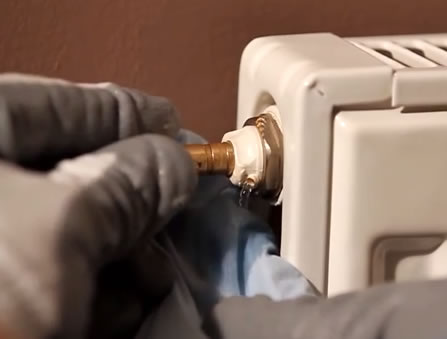
- 1
- 2
- 2025
- 2024
- 2023
- 2022
- 2019
- 2018
- 2016
- 2015
- 2014
- 2013
- 2012

